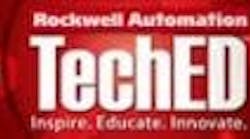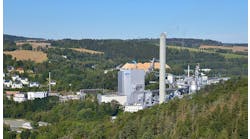[sidebar id =1]Much attention goes to the first two words that make up the buzz-phrase Industrial Internet of Things. “Industrial” is the arena in which the “Internet” is playing an increasingly important role. But the “things” – the T at the end of IIoT – is where the rubber meets the road in digital transformation.
“Smart assets are critical to the connected enterprise,” stressed Blake Moret, senior vice president of control projects & solutions and incoming president and CEO of Rockwell Automation, during his opening keynote presentation at TechED this week in Orlando. “These are the things in the IIoT, and we have home-field advantage.”
The advantage Moret references is his company's acumen with delivering value to enterprises by optimizing their smart connectivity. And the applications are varied. “Pharmaceutical companies care about serialization,” explained Moret. “Auto manufacturers care about scheduling. Oil and gas industries care about the optimal flow to extend the life of wells. We combine innovation and expertise through our Connected Enterprise offerings. Rockwell Automation takes advantage of a wide range of devices, understands changes in process, and we can apply reliability science to not only repair what breaks but to keep stuff from breaking.”
Broken industrial assets – smart or not – don’t benefit anybody.
During his presentation, Moret detailed his company's history, labeling it a “preamble to The Connected Enterprise.” The integrated-control focus of the 1990s led to the multi-discipline control era of the 2000s, which prompted the current era of information enablement and applying IT principles on the plant floor via connected services.
Business drivers
“Connected services is all about helping partners and customers get the most value out of automation investments in the connected enterprise,” added Scott Lapcewich, vice president and general manager of customer support & maintenance with Rockwell, who, during his keynote presentation on day two of TechED outlined key elements of implementing a successful connected-services strategy: proper connectivity, understanding enterprises’ key business drivers, optimally leveraging all of the data generated to inform business decisions, etc.
Lapcewich detailed how his team categorizes five offerings related to connected services:
- Networks and security – implementing networks and preventing the loss of IP
- Product and application-lifecycle support – educating clients to properly use connected offerings from Rockwell Automation and troubleshooting problems with a team of 1,000+ technical experts
- Remote-monitoring and cloud analytics – boosting enterprises’ ability to perform key functions, expediently, off-site
- Asset-management and reliability services – monitoring and tracking assets in real time to optimize asset-utilization
- People and asset safety – maintaining the health and safety of machines and machinists
[sidebar id =2]Lapcewich singled out asset safety among the hot topics in the connected-services discussion. How, along with increasing adopting of worker-safety regulations in developing countries, asset safety is increasingly on the minds of industry leaders around the globe.
Unsafe industrial assets – smart or not – don’t benefit anybody.
“The Connected Enterprise is all about high-performance architecture,” said Lapcewich. “All of the smart assets that make up The Connected Enterprise are now integrated. They communicate with one another. So connected services build upon The Connected Enterprise in different ways — the set of services to achieve this in the installation of a plant, then, once the plant is connected, leveraging the data that is produced and delivering that data back to the customer in the form of insight.”
In short, just as important as generating data is contextualizing it – translating it into actionable form. And increasingly, agreed Lapcwich and Moret, the focus is using asset-performance information generated by connected assets in a forecasting manner, looking miles down the highway rather than monitoring the rearview mirror.
When the rubber meets the road, it’s great to be prepared for bumps. It’s better to avoid them altogether while taking a shortcut.




